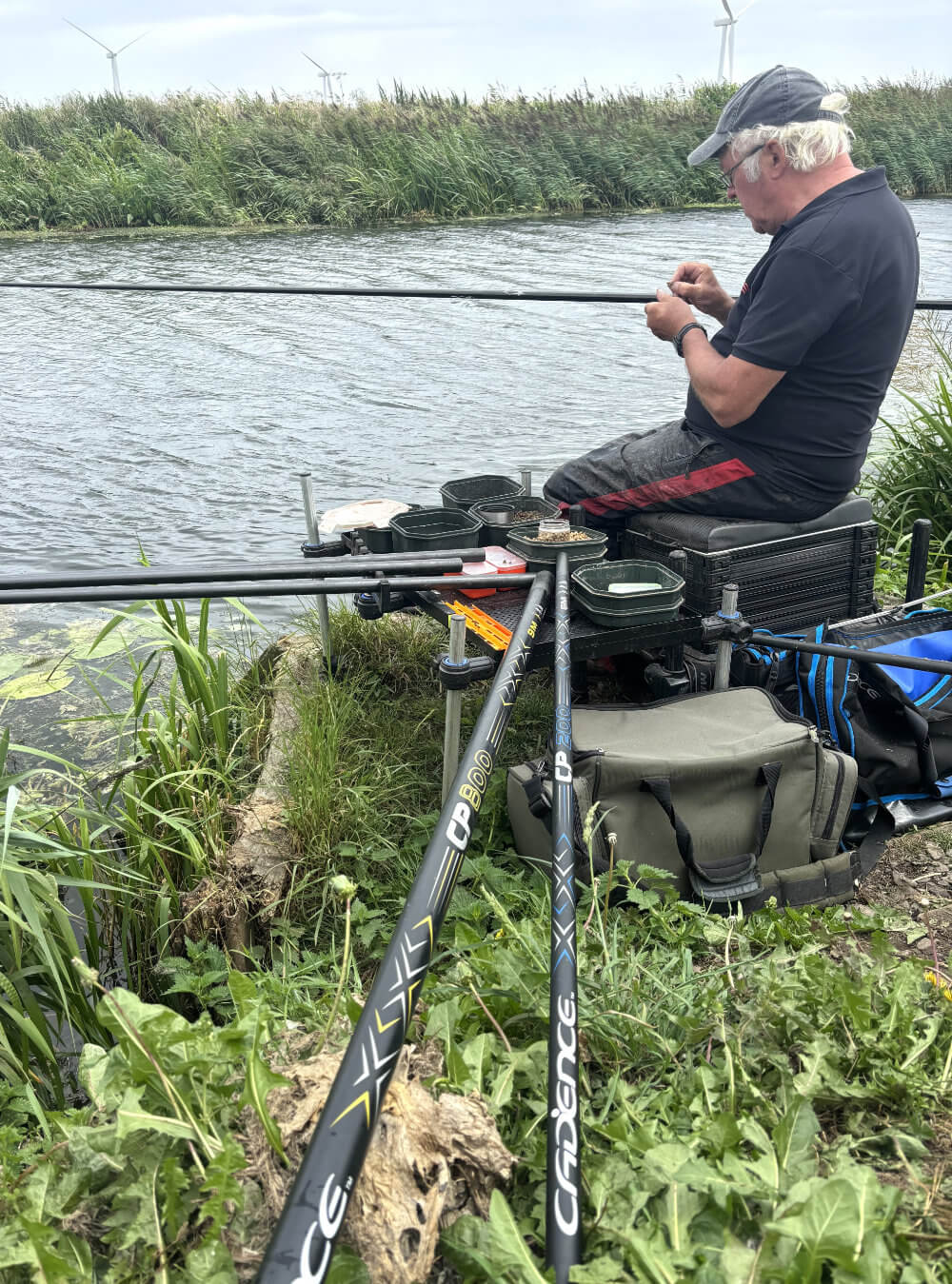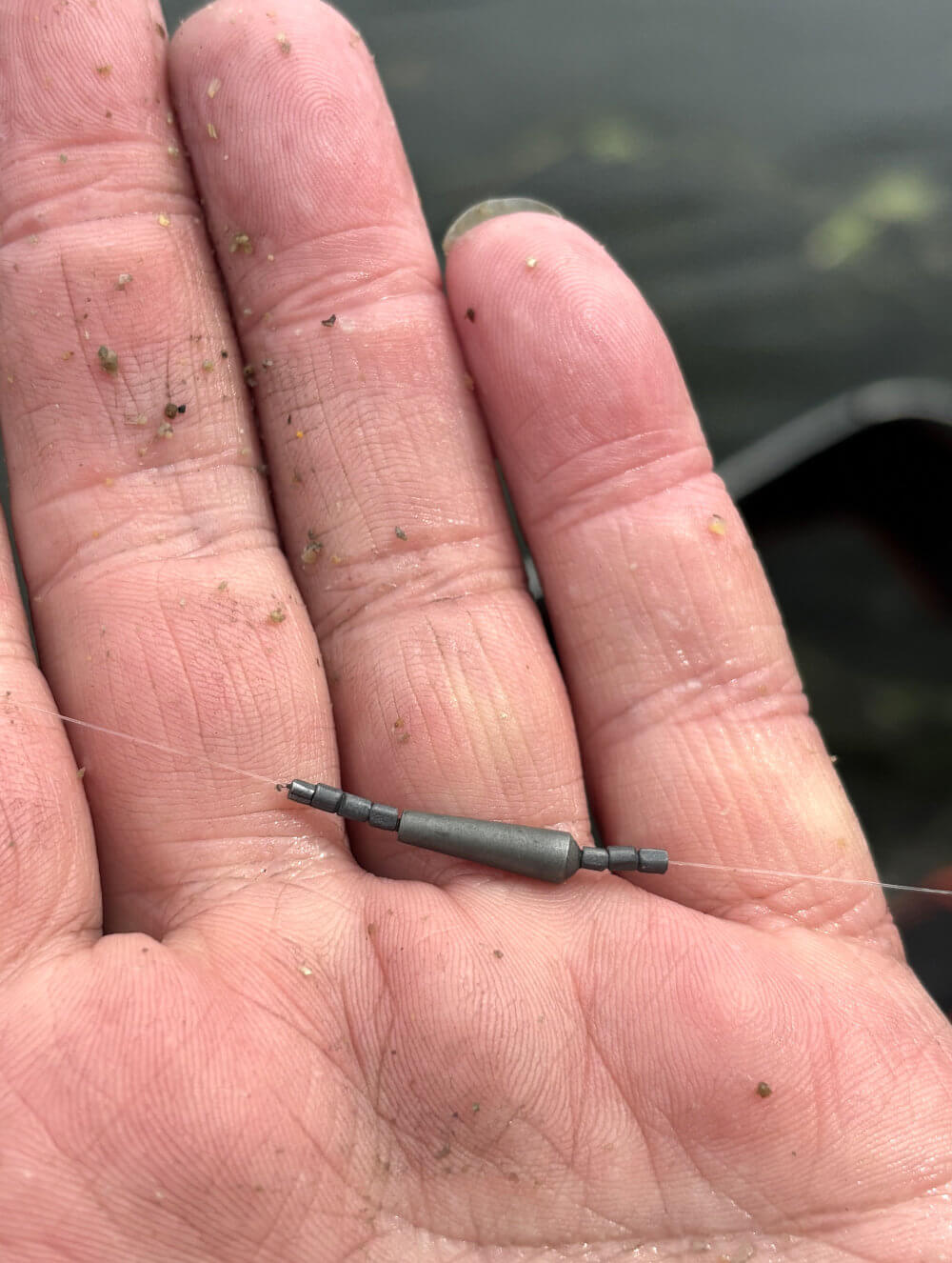Tackle and Tactics Continued
Setting Targets
A bit of planning for each outing does no harm, having options in case the main line of attack doesn’t work. I’ve been privileged to fish with some great anglers over the years, and they have all been extremely good at the tactical side of things, alongside being meticulous with their tackle and bait preparation. Having targets makes you work harder to keep up, especially if things are not going right. Rather than plodding along with something that isn’t working, being prepared to change course and experiment can get you out of trouble. It’s the reason those at the top are so consistent, always keeping ahead of the game. That particularly applies to tackle, staying open-minded enough to give new items a try. I could have kicked myself many times after rigidly sticking with my favourite gear, only to eventually discover newer items were far better.

In Reserve
Setting up just one line of attack is a lazy way of doing things and might be regretted later. A more sensible option is to have a get-out-of-trouble plan, which can be seen here. As a back-up to my Cadence CP200 Whip, I have my Cadence CP800 Margin Pole at the ready. The latter is there just in case big fish move in over my whip feed line. It only took ten minutes to set up the spare kit, working out the extra length of margin pole required to short line over the same distance my long line rig would be working at. Stopping to do that while fishing would be likely to disrupt the flow of things. While the reserve set-up might not be needed on most occasions, there will come a time when it makes all the difference between a good day and a bad one, maybe even gaining success in a match situation. It never hurts to have a different form of presentation up your sleeve anyway.

Better Organised
I have several of these Fox multi-partitioned bits boxes, designed for carp anglers, but they also work well for general coarse accessories. They are ideal for neatly storing items like drilled shot, swivels, float adaptors and feeder clip beads. They allow a lot of tackle to be stashed away compactly, not taking up much seat box space, while still providing quick access. Another one of these shallow tackle boxes houses different diameter cut pieces of pole float silicone, again handy and properly organised. I use partitions in the drawers of my seat box too, rather than having lots of rig bits swilling around all over the place. Being able to locate crucial end tackle quickly makes a big difference, cutting down on lost fishing time. I think of it a bit like a pit stop, where essential maintenance needs to be done effortlessly, efficiently and speedily.

The Difference
In this instance, I set up a 2gr Edge N6 Pole Float on my whip and a 1gr size for the margin pole. The bigger capacity option is obviously better for swinging out tackle on a long line, while the smaller one is okay with a much shorter distance between pole tip and float. There is another difference this brings, providing the opportunity to try running the lighter rig through, to find out if the change in presentation is more successful. Sometimes a lighter set up picks up more movement when there is little flow or drift, which can induce extra bites. The same thing can happen by using a strung bulk, rather than a single olivette main weight. The latter tends to nail a rig down, while strung shot picks up any undertow. The waterproof tape on my margin pole top kit is not a repair, by the way; it’s extra reinforcement where I have fitted a puller bung set up.

Rock Solid
This is an old tungsten olivette, which is more compact than brass equivalents, creating less resistance in flowing water. It’s not going anywhere because apart from the micro shot locking it, there’s also an anchoring bristle inside. There’s nothing worse than a bulk weight that keeps slipping out of place, which can easily happen when catching lots of fish. There are some fancy ways of balancing olivettes, involving carefully spread micro shot below them, aimed at stopping the hook length from tangling back around as the tackle descends. I use long hook lengths loop to loop style, so combined with several balancing shot either side, the stiff boom effect prevents any problems. Relying on stopper shot alone, which are also used to fine tune olivette rigs, is not enough to anchor these drilled weights when fished to-hand style.

Line Stops
I tested Edge Line and Float Stops before they were released. Like most anglers these days, I use these clever gizmos a lot for various tasks, and the new ones are spot-on. Some older versions were too soft and slipped out of place easily, requiring several to be positioned together to anchor right, which was messy. Newer types grip more firmly, in some cases too much so, and are hard to move without damaging the line. The Edge ones sit perfectly in-between, being firm enough to grip and stay where you want them and yet are easy to move. They all have their own wire loops too, which is important to guarantee they remain useable. When there are multiple line stops on each wire, in my experience, the loop gets closed up as the first one is pulled off, making the others behind it redundant. The price of this new product is very competitive.

Versatile Swivels
I’m delighted Edge Tackle are doing various types of swivels now, especially as you get more in a packet, at a better price point too. I incorporate small swivels into my waggler and feeder rigs, liking the way they help to join thicker main lines to thinner hook lengths, also eliminating spin-ups. I like the black plating, which makes them unobtrusive. There are also hooked snap links, link swivels, swivel snap links, quick change swivels and rig rings in the range. Link swivels and swivel snap links allow quick switching of feeders or leger weights, or alternating between the two methods. Quick change swivels are great for attaching hook lengths, allowing super fast fixes if a different length or breaking strain is required. They can also be used for speedily swopping to pre-prepared hair-rigged baits, such as drilled pellets or mini boilies.

Good Shot
Edge Soft Shot are easy to anchor on fishing line and have a grey coating. The latter is important to me because I don’t want anything flashy on my rigs, also liking the way the finish helps these weights grip mono better. The size range in containers like this provides popular SSG, AAA, BB,1,4,6 and 8 choices. Larger gauges are non-toxic and have slight recesses to make removal and re-use easier, while the smallest number 8s are lead. I still use big split shot for locking wagglers and forming bulk weights with sliding floats. Medium sizes are good for more streamlined bulks with river floats like chubbers and Avons. I sometimes use these and smaller shot to anchor drilled waggler weights around the base of bottom end floats, including unloaded pellet wagglers. Number 4, 6s and 8s offer versatile shotting up of light floats.

Top Mono
Of all the products Edge has introduced, one of my favourites is Premium Mono, which I use for pole rigs and hook lengths. It pays to check the diameters of the lines you rely on most because even trusted makes are not always what they say. When I first tried Premium, I discovered it was marginally thinner than what I had been using, being more accurate with its diameters and breaking strains. A problem can occur here, if the rig mono you have been relying on states it’s something like 0.15 mm, when it’s really 0.18 mm. It could be stronger than a true 0.15 mm like this one, but is cheating. Thicker line might also be tougher, but it loses vital presentation and the chance of potential bonus fish you will never get to catch. Dropping down a breaking strain often brings success when the going is hard, but I don’t have to do that so much now.

Hook Sense
Similar to line diameter and strength, I’m extremely fussy about the hooks I use. Very often a subtle change in size, shape, wire thickness, or even colour makes a big difference. That’s why I carry a wide range of patterns in various sizes. Switching up or down a gauge often makes an improvement, along with changing the weight of the pattern if hook baits are constantly being rejected or damaged without connecting with anything. I lean towards darker Teflon coated or black nickel designs, rather than flashy silver or light bronze models. Being less bright pulls more bites, particularly in clear water venues. The small envelopes most hook types are supplied in are no good on the bank, being fiddly to access the contents and spill prone. I transfer all my hooks into small boxes, which safely store them while being easy to get at.

Scaling Down
Match fishing has taught me the importance of finesse, carefully balancing and refining tackle to make the most of every peg. Gaining bites in the first place is a priority, while maintaining just enough strength to land whatever turns up is just as crucial. It’s a fine line in every sense, making sure the rods or poles you are using combine well with the end gear, which is what makes Cadence and Edge such a winning formula. In this instance, I’ve hooked into something large and angry on 5 metres of my CP200 whip, but I’m not over-concerned. I did have my margin pole ready in case a big fish moved in, but this one gave no warning, which often happens. I have faith in my kit, applying steady pressure to stop whatever this is from charging off into the distance. It’s off the bottom now, so I all I need to do is keep things steady and stay patient.

This Big
I don’t think I exaggerated too much with my target at the beginning of this feature, possibly being a tad lucky to land this weighty tench on whip tackle. Then again, I’ve managed this feat several times already this season, while bagging up on smaller skimmers, roach, rudd, and perch. Tackle balance was crucial. I would normally use a 0.10 mm hook length for speed fishing with small to medium size silvers on wild venues, possibly 0.12 mm if big weights were on the cards. However, carefully checking the rig lines I used previously, the 0.10 mm was really 0.11 mm and the 0.12 mm was 0.13 mm. Just to be safe with so many bonus big fish knocking around this year, I used a Premium Mono 0.13 mm hook length, tied to 0.15 mm main line. This provided enough finesse for a double figure catch of small skimmers and rudd, plus this beauty.

